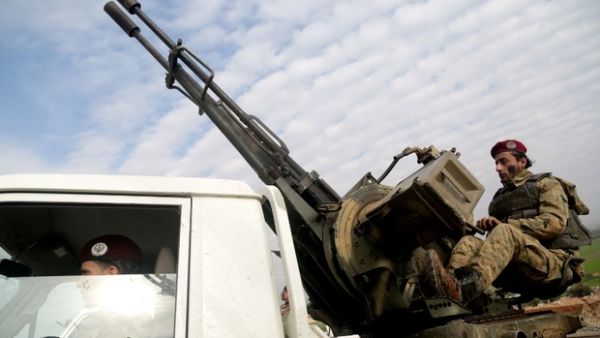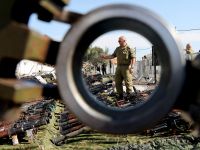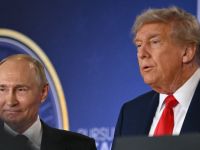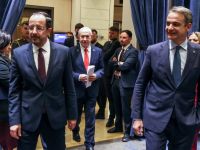By Ty Joplin
On Dec 14, 2018, U.S. President Donald Trump got on the phone with Turkey’s leader, Reccep Erdogan to discuss Syria. Trump, who has been wary of U.S.’ involvement in the Middle East, was reportedly convinced on the spot by Erdogan that he needed to pull out, so he ordered a withdrawal from the country.
On the ground in Syria, Trump's abrupt pullout is a gleaming oppotunity for Bashar al-Assad's Syria and Recep Erdogan's Turkey to assert control over areas the U.S. will withdraw from.
Overall, the move shifts the U.S.' foreign policy more in-line with Trump's own worldview, and seriously jeopardizes Syrian Kurds' quest for greater autonomy.
What the Chaos has Exposed
Trump smiles with James Mattis and other advisors in the background (AFP/FILE)
On Dec 20, Trump tweeted that ‘We have defeated ISIS in Syria, my only reason for being there during the Trump Presidency,” then he ordered the U.S. to conduct a full military withdrawal from the country.
After Trump's announcement, Secretary of Defense James Mattis resigned, saying Trump needed someone “whose views are better aligned with” his one. The U.S. envoy to the anti-ISIS operations, Brett McGurk, also quit over Trump’s decision.
Trump’s emergent foreign policy doctrine seems to come from the ashes of decades of failed and stalled wars in the Middle East. He views long, indefinite wars like the ones in Iraq and Afghanistan as costly endeavours that offer little tangible gain for the U.S.
To be clear though, he was initially pro-Iraq war, like many other politicians who later disavowed their position. And he is not against all wars: he reportedly considered invading Venezuela and continues to support the never ending war in Yemen by supplying the Saudis with arms and intelligence.
On Syria, Trump has called it a land of “sand and death,” and never seemed to be interested in having troops there.
His advisors on the other hand want basically the opposite: more military involvement in the Middle East and especially in Syria.
John Bolton is famous in Washington circles for his war-mongering stance on Iran, hatred of the Iran Nuclear Deal and belief that the Iranian regime must be forcibly replaced. He is one of the chief architects of the neoconservative foreign policy approach that emphasizes unilateralism, military might and indefinite wars like the Iraq War, which helped to justify.
Pompeo too shares Bolton’s intense desire to see Iran taken down. Their positions represent a generally-held belief in many military circles that the U.S. should confront Iran and potentially engage it militarily. While he was touring the Middle East to explain Trump’s decision, he said he wanted every Iranian troops kicked out of Syria, declaring, “every Iranian boot on the ground is an ambitious directive, but it’s ours. It is our mission.”
To position the military for this task, U.S. military leaders and intelligence began re-framing the reason for U.S.’ troop presence in Syria from counter-terrorism operations to counter-Iran operations.
In June 2018, the Pentagon released a curious report, which claimed that ISIS still had about 30,000 troops in Iraq and Syria, and focused a great deal of its attention on countering Iranian influence in the same countries. The 30,000 number contradicted years of other intelligence reports that indicated ISIS’ numbers were slowly dwindling. Other estimates by experts at the time put ISIS’ strength around 5,000-10,000.
It also introduced Iran as an adversary similar to that of ISIS.
U.S. Troops in Armored Personnel Carriers (APCs) in Syria (AFP/FILE)
In retrospect and in the context of Trump’s desire to beat ISIS, the report’s inflation of ISIS’ strength, the report may have sought to justify enhanced and prolonged troop presence to counter Iran under the guise of continued anti-ISIS operations.
Despite this prepation and re-framing, Pompeo's and Bolton's strategy is losing favor and the pullout is the biggest piece of evidence that Trump's neo-isolationist vision is winning out.
However, one part of the military’s anti-Iran plan remains alive for now: a key U.S. base in Syria near al-Tanf will remain operational.
That base obstructs a key trade route between Tehran, Baghdad, Damascus and Beirut, physically cutting off Iran’s ability to form a continuous pathway between them and form what members of the U.S. military call the ‘Shiite Crescent.’
With all this together, it is clear that Trump’s vision for how his administration engages with the Middle East is winning over his advisors for the time being. To put this in more historical terms, Trump’s politics of disengagement is winning out over the his advisors’ neoconservative viewpoints.
It must be remembered however, that even though the withdrawal has begun, his advisors still may seek to delay or condition it as much as they possibly can in a last-ditch effort to salvage their power in dictating America's militaristic approach to the region.
Wins for Turkey, Syria Loss for the Kurds
SDF soldiers attend the funeral of a Kurdish commander (AFP/FILE)
The U.S. withdrawal from Syria will be, if it happens in its current form, an outright win for Turkey and Syria.
Turkey considers Syria’s Kurdish militias to be connected to the Kurdistan Workers Party (PKK) in Turkey, which it has been warring against for decades. Erdogan has launched multiple operations to oust and occupy areas of Syrian Kurdish control throughout the war in Syria.
In 2017, Turkey launched Operation Euphrates Shield and captured 770 square miles of Kurdish-controlled Syria. In 2018, Turkey launched the follow-up Operation Olive Branch to seize even more land from Kurdish militias.
As a result from both of these incursions, Turkey now controls a sizeable swath of territory in northern Syria that once belonged to the Kurds, and is eyeing to capture even more from them. The one thing stopping them has been the presence of U.S. troops, who have served as a buffer between Turkey and the Kurds.
Trump threatened to “devastate” Turkey economically if it went after the Kurds the U.S. were leaving behind, but also cautioned the Kurds not to “provoke Turkey.” Meanwhile, Turkey has threatened to attack the region even if it has U.S. troops inside, if Trump delays the withdrawal.
“If the [withdrawal] is put off with ridiculous excuses like ‘Turks are massacring Kurds,’ which do not reflect the reality, we will” continue with the plan to occupy the Manbij region, Turkey’s Foreign Minister Mevlut Cavusoglu said.
To prepare for this possibility, the Kurdish-led Syrian Democratic Forces (SDF) have been negotiating with Syria’s President Bashar al-Assad for regime troops to replace U.S. ones as that buffer force between them and Turkey.
Assad looks to have accepted whatever terms have been negotiated and is now preparing to set up a buffer zone to deter a Turkish incursion.
Reportedly, Russian and Syrian troops have garrisoned a joint military base 18 kilometers west of Manbij, a Kurdish-controlled town Turkey has sought control over for years. The base’s location is an obstacle to any potential Turkish advance, and means the Kurds may have a replacement for U.S. troops. But it comes at a cost.
One of the Kurd’s biggest strategic priorities from the start of the war has been greater autonomy from Damascus. One of their greatest prizes in the war so far has been the capture of the majority of Syria’s oil fields from ISIS and the maintenance of much of its arable land.
These have both been key bargaining chips to potentially offer Assad in exchange for more self-governance. But the Kurds are in a demonstrably weaker position: as they invite regime troops into their territory to protect them, they may lose their strategic bargaining chips in the land and oil, and thus concede hopes for autonomy.
The Syrian regime, for its part, will see its new role as protector of Kurdish land as a win for the same reason the Kurds see it as a loss. Assad has sought to reassert control over the parts of Syria he lost in the war, and one of the most inaccessible regions for him has been the Kurdish-controlled north.
Previously, the Kurds called on the regime to safeguard its territory in northwestern Afrin. Turkey eventually captured the majority of that region, but it gave Assad the crucial opportunity to establish influence with the Kurds and gain assets that were lost.
It appears Trump views the expensive and never-ending wars in Iraq and Afghanistan as a cautionary tale for Syria.
And while pulling out troops from the country may save the U.S. from yet another costly, vague and extralegal war, his administration must now reckon with the fate of those allies and civilians it is leaving behind.







